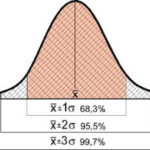October 8, 2024 Trading notes
Cut losses and make profits run, regardless of all other rules.
Richard Donchian‘s 20 Rules of Trading. A system that is completely accessible to everyone
Most of these rules are still valid.
Even though nearly ninety years have passed since they were first published in 1934.
General rules

1.Beware of acting immediately on the basis of widespread public opinion.
Even if correct, it will usually delay the movement.
2.After a period of calm and inactivity, it is necessary to monitor and especially prepare to follow the movement in the direction of increasing volume.
3.Cut losses and run profits, regardless of all other rules.
4.When the market position is not certain, it is advisable to take moderate positions.
Clearly defined moves are marked frequently enough to make the situation very interesting, and concentration on such moves will avoid going the extra mile.
5.Rarely take positions in the direction of a move that has now lasted for three sessions.
Wait at least for a one-day reversal.
6.Judicious use of stop orders is a valuable aid to profitable trading.
Stops can be used to protect profits, to limit losses, and to take positions in certain formations such as triangles.
Stop orders prove more valuable and less insidious when used in relation to the chart formation.
7.In a market where the rises are likely to equal or exceed the declines, it is appropriate to take a larger position for the rises for percentage reasons: a decline from 50 to 25 will generate only 50 percent profit, while an advance from 25 to 50 will generate 100 percent.
8.To take a position, price orders can be used. To close a position, use market orders.
9.Buy commodities on strength and sell on weakness, subject to all other rules.
10.Movements in which strong hands have taken positions are usually more important than those in which strong hands are not participating.
11.The study of a company’s capitalization and its historical volatility is definitely more important than the study of balance sheets.
Technical analysis rules

12.A move followed by a sideways range often precedes another move of almost equal magnitude in the same direction as the original move.
Typically, when the second move from the sideways range runs out, a counter move approaching the sideways range can be expected.
13.Reversal or resistance to movement is likely to occur when price levels are reached where the commodity has fluctuated within a narrow trading range for a considerable period of time in the past, or when approaching highs or lows.
14.Watch for possible buying or selling opportunities when price approaches the trend-line, especially with medium or low volumes. Also make sure that this line has not been touched or approached too frequently.
15.Observe “creeps” or repeated bounces as minor or major trendlines are reached and prepare to observe a breakout.
16.Breaking of minor trend-lines contrary to the major trend provides other important signals to possibly take a position, and possibly it is possible in the case of a stop-order to reverse the position in the portfolio.
17.Triangles can signify accumulation or distribution, regardless of all other considerations, although triangles usually break on the flat side.
18.Beware of volume climax, especially after a long move.
19.Do not count on closing gaps, unless you can distinguish between breakaway gaps, normal gaps, and exhaustion gaps.
20.During a move, take or increase positions in the direction of the move at the market the morning after any one-day reversal, however slight the reversal may be, especially if volume declines during the reversal.










